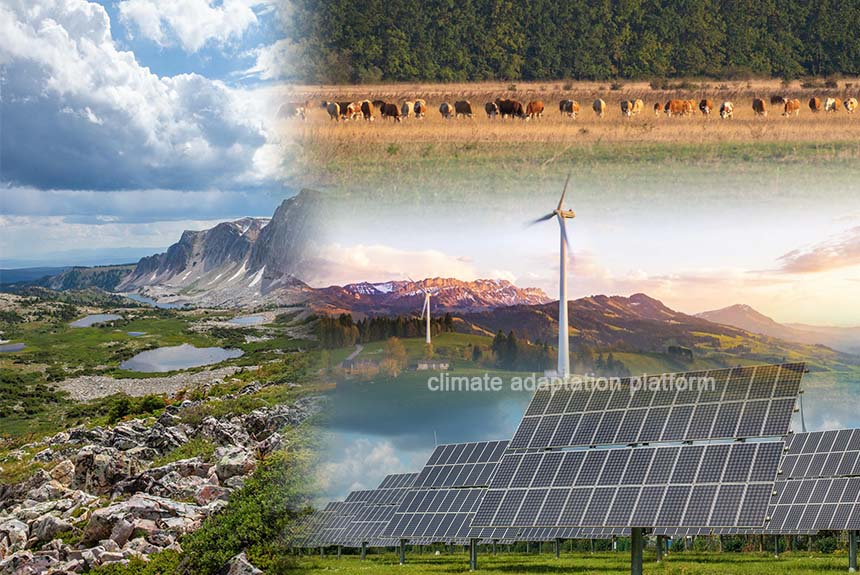Wyoming, the largest coal-producing state in the country and known for livestock and ranch farming, also faces a substantial renewable energy potential.
The state of Wyoming is the powerhouse of the North American mining sector. It is endowed with many minerals, such as coal, natural gas, coalbed methane, crude oil, uranium, and trona, which has been an economic anchor.
The US Energy Information Administration data shows that the state has been the largest producer of coal since 1986, the eighth biggest producer of crude oil nationwide in 2022 and the 10th in natural gas production.
Renewable energy potential
Wyoming’s geography and altitudes give the state the highest wind energy generation potential. Its elevation ranged between 13,804 feet at its highest peak from the summit of Gannet Peak and 3,125 feet at its lowest elevation on the state’s northeast corner.
3,000 MW capacity wind farm located south of Sinclair and Rawlins in Carbon County, Wyoming
According to the Power Company of Wyoming, Wyoming has the best winds in the country, classed between 6 and 7.
The Chokecherry and Sierra Madre Wind Energy project, a 3,000 MW capacity wind farm located south of Sinclair and Rawlins in Carbon County, Wyoming, is a large-scale wind farm currently under construction. Its completion date is expected in 2026. The project has a long-term surface disturbance of less than 1,500 acres of a 320,000-acre ranch owned and operated by an affiliate company.
Agrivoltaics farming
BrightNight, a renewable energy company, proposes an agrivoltaics farm on a 4,738-acre privately owned ranch farm in Converse County, Wyoming.
Inside Climate News reports that the solar farm project uses land areas for solar panels and agriculture and plans to build more than 1 million solar panels with bases several feet off the ground to allow enough room for the sheep to continue grazing. BrightNight will construct a battery storage facility and a few miles of above-ground transmission lines.
The article notes that the project “could forge an unlikely alliance between two industries—one ancient; the other, high tech— that typically compete for resources”.
According to Inside Climate News, the Converse County Commissioners have already ordered the drafting of an approval order for the project and with the permit from the state’s Department of Environmental Quality, which they are considering granting late in February 2024, the solar farm is expected to break ground as early as March next year.
During the presentation of the project by BrigtNight, some county residents voiced concerns regarding the solar farm’s access to transmission lines, its impact on prairie dog migration patterns and the effects of radiation on residents. Concerning the access to transmission lines, BrightNight responded that they would need to wait for the county and state permits before determining grid access. As for the prairie dog migration, they will coordinate with the Wyoming Game and Fish Department to consider best practices for responding to the rodents, and lastly, the high voltage equipment that emits small amounts of magnetic waves will be placed far from the community where it won’t affect them.
Sheep grazing and growth under agrivoltaics solar farms
An experiment by a team of researchers from Oregon State University, tracking sheep grazing and growth in the spring of 2019 and 2020, shows that solar farms are just as effective grazing areas as traditional open pastures and that combining grazing with solar generation increases land productivity by offering crops respite from the sun in hot, arid environments. Regarding sheep growth, although there is a 38% decrease in grazing area due to the presence of solar panels, the quality of vegetation under the solar panels compensates for the drop in land areas. Hence, the sheep still gain the same weight as those in the open field. Researchers also noted that some sheep prefer to be under the shade of solar panels.
While the agrivoltaic farms will do well in certain areas, the article notes that it won’t be the defacto for solar farms in Wyoming going forward and recommends that several factors must be considered, such as soil variation, grazing plants, moisture, and terrain before any location in Wyoming decides to implement agrivoltaic farms.
Wind energy growth
Wyoming’s coal production is declining. Six decades after its coal-mining boom, Carbon County, which rightly gets its name from its vast coal and oil reserve, finds that its coal prospects have dipped below natural gas and renewable energy. E&E News reports that its coal production in 2021 of 239 million is half its output from 2008. The county’s last two coal mines also closed in 2005.
Data from the US EIA shows that wind power has grown more than twice since 2019, accounting for over 20% of the state’s generation, although 70% of electricity generation is still coal-fired as of 2022.
The article notes that as of 2022, Carbon County had the country’s 12th-most installed wind energy capacity, citing data from the American Clean Power Association. According to the Department of Energy’s Wind Energy Technologies Office, the state’s potential wind capacity could be as high as 472,000 MW. A 2022 study cited by the article shows that increasing the wind capacity in Wyoming will support thousands of construction and permanent jobs while generating $89 million a year in taxes.
Source:
Bolster, J. (2024, February 17). In Wyoming, Sheep May Safely Graze Under Solar Panels in One of the State’s First “Agrivoltaic” Projects. Inside Climate News. Retrieved from https://insideclimatenews.org/news/17022024/in-wyoming-sheep-may-safely-graze-under-solar-panels-in-one-of-the-states-first-agrivoltaic-projects/
Wyoming State Energy Profile. (2023, May 18). US EIA. Retrieved from https://www.eia.gov/state/print.php?sid=WY
Wyoming Minerals. (2023). Wyoming State Geological Survey. Retrieved from https://www.wsgs.wyo.gov/minerals/minerals.aspx
Putting wind to work for Carbon County. Power Company of Wyoming. Retrieved from https://www.powercompanyofwyoming.com/
Plautz, J. (2023, July 19). How Wyoming’s Carbon County came to embrace renewable energy. E&E News. Retrieved from https://www.eenews.net/articles/how-wyomings-carbon-county-came-to-embrace-renewable-energy/



Leave a Reply